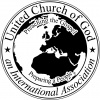The Tuatha de Danaan
In our free brochure, The United States and Britain in Bible Prophecy, we explain how a centuries-long migration was taking the 10 tribes from the areas of their Assyrian captivity to northwest Europe (be sure to request a copy if you haven’t already).
But it should be noted that there was some Israelite migration prior to the Assyrian captivity. The Danites, mariners in their own right and later more so with the Phoenicians, sailed far and wide over the seas. As we’ve seen, some settled in Greece and became known as the Danaans (again, see Appendix 2: "Were the Greeks Israelites?").
Interestingly, all early histories of Ireland mention the arrival there of people from Greece called the Tuatha de Danaan. While some today equate them with ancient demigods or mythical fairy folk, they were definitely a genuinely historical people. The word tuath simply means "tribe." Notice: "Old Irish ‘tuath,’ Welsh ‘tud’ (people, country), Breton ‘tud’ (people) and Gaulish ‘teuta’ (tribe) all come from Common Celtic towta, from the Indo-European word teuta (tribe)" (Dennis King, Focal an Lae: The Word of the Day in Irish, on-line at www.lincolnu.edu/~focal/backinst/focal114.htm). Tuatha de Danaan is thus the tribe of Danaan.
The Annals of Ireland report: "The Dan’ans were a highly civilized people, well skilled in architecture and other arts from their long residence in Greece, and their intercourse with the Phoenicians. Their first appearance in Ireland was 1200 B.C., or 85 years after the great victory of Deborah."
The Tuatha de Danaan, then, must be synonymous with the Danaans of Greece and thus the Israelite tribe of Dan. This is not at all farfetched. Indeed, it is widely accepted that the Phoenicians established trading outposts or colonies as far away as the British Isles: "The Phoenicians are believed to have played an important part in spreading the early bronze culture by their trade in tin, which their ships brought to the eastern Mediterranean from Great Britain and Spain at least as early as 1100 BC" ("Industries, Extraction and Processing," Encyclopaedia Britannica, Macropaedia, Vol 21, 1985, p. 424).
Yet what many often fail to realize is that the ancient maritime power designated as "Phoenicia" was actually an alliance between the city-states of Tyre and Sidon and the nation of Israel—in which Israel was the senior partner. The Universal Jewish Encyclopedia says: "In the time of Solomon, Phoenicians, accompanied by Hebrews, reached as far as England . . . England was therefore known to the Israelites and they may have sought a refuge there after the fall of their kingdom" (Vol. 1, p. 316).
King Solomon, we are told in Scripture, "had a fleet of ships of Tarshish at sea with the fleet of Hiram [the Phoenician king of Tyre]" (1 Kings 10:22, NRSV). Tarshish was an ancient port of southern Spain, also known as Tartessus. It was evidently named after Tarshish, the son of Javan (Genesis 10:4)—Javan (or Yavan) being the name for Greece in the Old Testament. As an early Ionian Greek settlement, it was actually an Israelite-Phoenician colony.
